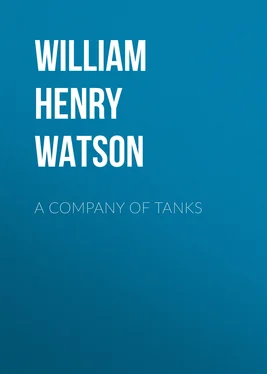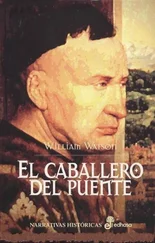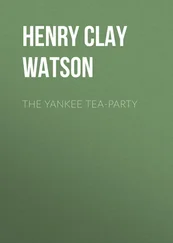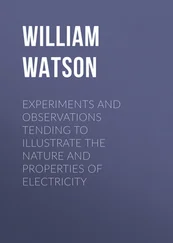William Henry Lowe Watson - A Company of Tanks
Здесь есть возможность читать онлайн «William Henry Lowe Watson - A Company of Tanks» — ознакомительный отрывок электронной книги совершенно бесплатно, а после прочтения отрывка купить полную версию. В некоторых случаях можно слушать аудио, скачать через торрент в формате fb2 и присутствует краткое содержание. Жанр: foreign_prose, История, foreign_edu, foreign_antique, на английском языке. Описание произведения, (предисловие) а так же отзывы посетителей доступны на портале библиотеки ЛибКат.
- Название:A Company of Tanks
- Автор:
- Жанр:
- Год:неизвестен
- ISBN:нет данных
- Рейтинг книги:3 / 5. Голосов: 1
-
Избранное:Добавить в избранное
- Отзывы:
-
Ваша оценка:
- 60
- 1
- 2
- 3
- 4
- 5
A Company of Tanks: краткое содержание, описание и аннотация
Предлагаем к чтению аннотацию, описание, краткое содержание или предисловие (зависит от того, что написал сам автор книги «A Company of Tanks»). Если вы не нашли необходимую информацию о книге — напишите в комментариях, мы постараемся отыскать её.
A Company of Tanks — читать онлайн ознакомительный отрывок
Ниже представлен текст книги, разбитый по страницам. Система сохранения места последней прочитанной страницы, позволяет с удобством читать онлайн бесплатно книгу «A Company of Tanks», без необходимости каждый раз заново искать на чём Вы остановились. Поставьте закладку, и сможете в любой момент перейти на страницу, на которой закончили чтение.
Интервал:
Закладка:
In the last week of March the Germans had not taken refuge in their main line of defence, and were still holding out in the villages of Croisilles, Ecoust, and Noreuil.
We were attacking them vigorously, but with no success and heavy casualties. On the morning of the 31st March Jumbo and I drove again to Ervillers and walked to Mory, pushing forward down the slope towards Ecoust. There was a quaint feeling of insecurity, quite unjustified, in strolling about "on top." We had an excellent view of our shells bursting on the wire in front of Ecoust, but we saw nothing of the country we wanted to reconnoitre—the approaches to Bullecourt. Ecoust was finally captured at the sixth or seventh attempt by the 9th Division on April 1st.
In the afternoon I paid my first visit to the Vth Corps, then at Acheux, twenty miles back. I motored by Bapaume and Albert over the Somme battlefield. The nakedness of it is now hidden by coarse grass and rough weeds, but in March of 1917 it was bare. There was dark-brown mud for mile after mile as far as the eye could see—mud churned and tortured until the whole surface of the earth was pitted with craters. Mud overwhelmed the landscape. Trees showed only against the sky; dead men, old equipment, derelict tanks blended with the mud. At Le Sars bits of walls and smashed beams lay embedded in the mud. At Pozières the mud held a few mud-coloured bricks. I was glad when I came to Albert.
We took the Doullens road and found the Corps well housed in the chateau at Acheux. I announced the imminent arrival of my tanks, but the news did not kindle the enthusiasm I had expected. The Vth Corps had already used tanks and knew their little ways. After tea I consulted with the lesser lights of the staff. Satisfactory arrangements were made for supplies, rations, and accommodation, and I demanded and obtained the use of a troop of Glasgow Yeomanry, on the plea that they were required to cover the tracks of my tanks. I wanted a horse to ride.
I decided to return by Puisieux-le-Mont. It was apparent that the Albert-Bapaume road would soon become uncomfortably crowded. I wanted to reconnoitre the only alternative route, and at the same time to inspect the village of Serre, which, on paper, I had so often and so violently attacked.
Never have I endured a more ghastly ride. In comparison with the country on either side of the Puisieux road, the Somme battlefield from the highway between Albert and Bapaume was serenely monotonous. After Mailly-Mailly the road became a rough track, narrow and full of unfilled shell-holes. Crazy bridges had been thrown across the trenches. The sun was setting in a fiery sky, and a reddish light tinged the pitiful tumbled earth, and glittered for a moment on the desolate water of the shell-holes. The crumbling trenches were manned with restless dead. In the doubtful light I thought a dead German moved. He lay on his back, half-sunken in the slimy mud, with knees drawn up, and blackened hand gripping a rusty rifle. Mercifully I could not see his face, but I thought his arms twitched.
It grew darker, and so narrow was the track that I might have been driving over the black mud of the battlefield. A derelict limber half-blocked the road, and, swerving to avoid it, we barely missed the carcass of a horse, dead a few days. Our progress was slow. Soon we lit the lamps. The track was full of horrible shadows, and big dark things seemed to come down the road to meet us—shattered transport or old heaps of shells. On either side of the car was the desert of mud and water-logged holes and corpses, face downward under the water, and broken guns and mortars, and little graves, and mile-long strands of rusty wire. Everywhere maimed ghosts were rustling, and the plump rats were pattering along the trenches.
It is unwise to go through a battlefield at night. If they make the Somme battlefield a forest, no man will be brave enough to cross it in the dark.
We came to lights in the ruins of a village, and I stopped for a pipe and a word with my driver....
My tanks arrived at Achiet-le-Grand just after dawn on April 1st. We had taken them over from the central workshops at Erin, and had drawn there a vast variety of equipment. The tanks had been driven on to the train by an Engineer officer. The railway journey had been delayed as usual, and the usual expert—this time a doctor—had walked along the train, when shunted at Doullens, and had pointed out to his companion the "new monster tanks."
In the morning we hauled off the sponson-trolleys—their use will be explained later—but we thought it wiser to wait until dusk before we detrained the tanks.
Tanks travel on flat trucks, such as are employed to carry rails. They are driven on and off the train under their own power, but this performance requires care, skill, and experience. A Mk. I. or a Mk. IV. tank is not too easy to steer, while the space between the track and the edge of the truck is alarmingly small. With two exceptions, my officers had neither experience nor skill.
It was an anxious time—not only for the company commander. The office of the R.T.O., at the edge of the ramp, was narrowly missed on two occasions. Very slowly and with infinite care the tanks were persuaded to leave the train and move down the road to the tankodrome we had selected. Then it began first to sleet and then to snow, while an icy wind rose, until a blizzard was lashing our faces.
In the old Mark I. tank it was necessary to detach the sponsons, or armoured "bow-windows," on either side before the tank could be moved by rail. This was no easy matter. The tank was driven into two shallow trenches. A stout four-wheeled trolley was run alongside, and a sort of crane was fitted, to which slings were secured. The sponson was girt about with these slings, the bolts which secured the sponson to the body of the tank were taken out, and the sponson was lowered on to the trolley.
My men, of whom the majority were inexperienced, carried out the reverse process on a dark night in a blizzard. Their fingers were so blue with cold that they could scarcely handle their tools. The climax was reached when we discovered that we should be compelled to drill new holes in several of the sponsons, because in certain cases the holes in the sponsons did not correspond with the holes in the tanks.
If the men never had a harder night's work, they certainly never worked better. Half the tanks fitted their sponsons and reached Behagnies by dawn. The remainder, less one lame duck, were hidden in Achiet-le-Grand until darkness once more allowed them to move.
Every precaution was taken to conceal the tanks from the enemy. My troop of Glasgow Yeomanry, under the direction of Talbot, who had been a sergeant-major in the Dragoons, rode twice over the tracks which the tanks had made in order to obliterate them by hoof-marks. At Behagnies the tanks were drawn up against convenient hedges and enveloped in tarpaulins and camouflage nets. In spite of our efforts they appeared terribly obvious as we surveyed them anxiously from one point after another. Our subtle devices were soon tested. An enterprising German airman flew down out of the clouds and darted upon two luckless observation balloons to right and left of us. He set them both on fire with tracer bullets, came low over our camp, fired down the streets of Bapaume, and disappeared into the east. The sporting instinct of my men responded to the audacity of the exploit, and they cheered him; but for the next twenty-four hours I was wondering if the camouflage of my tanks had been successful, or if the attention of the airman had been concentrated solely on the balloons. Presumably we were not spotted, for while at Behagnies we were neither shelled nor bombed.
The preparations for my first essay in tank-fighting were beginning to bear fruit. Eleven tanks lay within two short marches of any point from which they were likely to attack, and my crews were busy overhauling them. One crippled tank was hidden at Achiet-le-Grand, but the mechanical defect which had developed in her must have escaped the notice of central workshops. Cooper 6 6 Major R. Cooper, M.C., Royal Fusiliers, had replaced Captain R. Haigh, M.C.
was engaged night and day in taking up supplies and making forward dumps. The Corps had provided us with a convoy of limbered waggons drawn by mules—the forward roads were not passable for lorries—and the wretched animals had little rest. We were ordered to be ready by the 6th, and the order meant a fight against time. Tanks consume an incredible quantity of petrol, oil, grease, and water, and it was necessary to form dumps of these supplies and of ammunition at Mory Copse, our half-way house, and at Noreuil and Ecoust. Night and day the convoy trekked backwards and forwards under Cooper or Talbot. Mules cast their shoes, the drivers were dog-tired, the dumps at Noreuil and Ecoust were shelled, both roads to Mory were blocked by the explosion of delayed mines,—in spite of all difficulties the dumps were made, and on the morning of the battle the convoy stood by loaded, ready to follow the tanks in the expected break through.
Интервал:
Закладка:
Похожие книги на «A Company of Tanks»
Представляем Вашему вниманию похожие книги на «A Company of Tanks» списком для выбора. Мы отобрали схожую по названию и смыслу литературу в надежде предоставить читателям больше вариантов отыскать новые, интересные, ещё непрочитанные произведения.
Обсуждение, отзывы о книге «A Company of Tanks» и просто собственные мнения читателей. Оставьте ваши комментарии, напишите, что Вы думаете о произведении, его смысле или главных героях. Укажите что конкретно понравилось, а что нет, и почему Вы так считаете.












